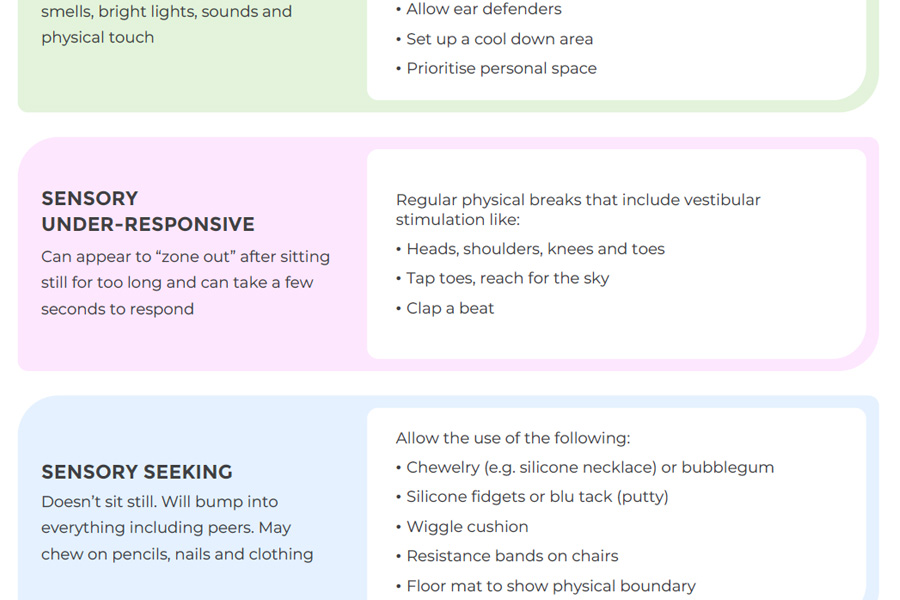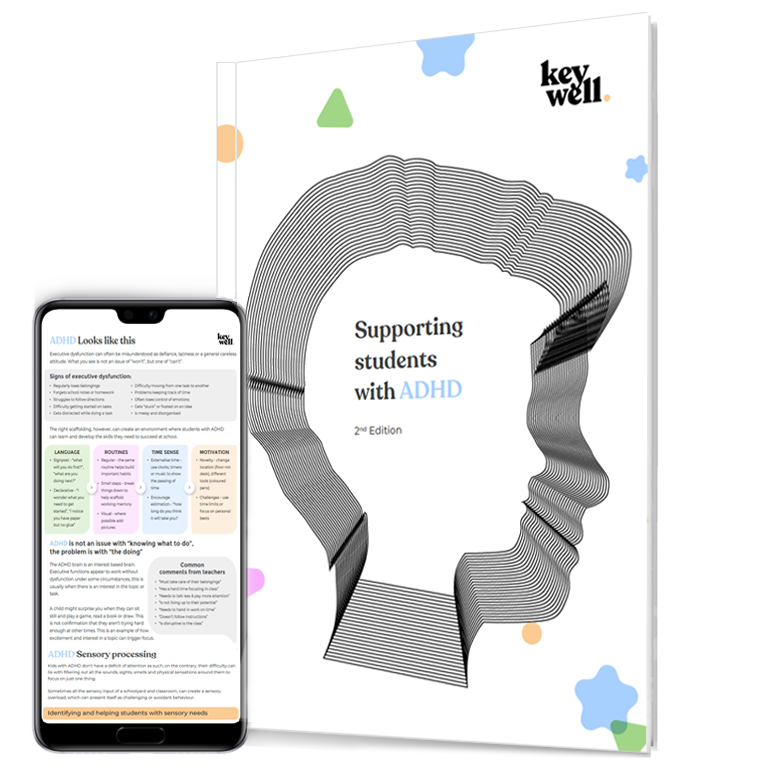Observation
I noticed that Tom would usually become physically aggressive with other students when they had to line up and during floor time activities. There was always bumping and touching as students moved into place.Approach
Based on my observations, and what I read in the teacher’s booklet about sensory processing, I made some assumptions about what might be happening for Tom.
- He is probably reacting to being touched through unintended physical contact – this is why he lashes out when peers are in close proximity.
- He is probably getting too close to their peers causing them to pushback, and then triggering him to hit.

Solution
I adapted and implemented two solutions I found in the booklet:
- I bought pieces of large felt and cut them up into circles. I placed them on the floor with space between them to give everyone personal space. I asked my students to stay in their circles and strategically placed Tom near peers who are better able to regulate their energy.
- For activities where the kids had to line up, I asked Tom to stand at the front of the line to be my helper. I gave him a timer to hold on to, so he had something to focus on.
Outcome
I found that the issues have now been largely resolved. Tom liked the extra responsibility of holding on to the timer, and I could see he was focused on doing a good job. The problem is also manageable during floor time as long as I can maintain the sitting configuration.
Teacher's Booklet
Supporting ADHD Students In The Classroom
Empower teachers with practical strategies to support students with ADHD in the classroom.
